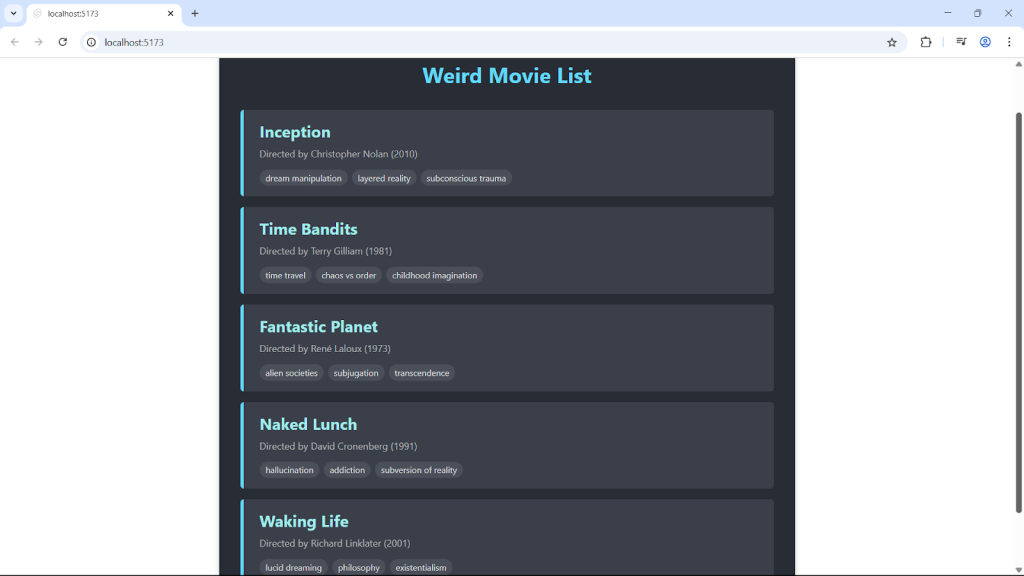<script>
const mindBendingMovies = [
{ id: 1, title: "Inception", director: "Christopher Nolan", year: 2010, themes: ["dream manipulation", "layered reality", "subconscious trauma"] },
{ id: 2, title: "Time Bandits", director: "Terry Gilliam", year: 1981, themes: ["time travel", "chaos vs order", "childhood imagination"] },
{ id: 3, title: "Fantastic Planet", director: "René Laloux", year: 1973, themes: ["alien societies", "subjugation", "transcendence"] },
{ id: 4, title: "Naked Lunch", director: "David Cronenberg", year: 1991, themes: ["hallucination", "addiction", "subversion of reality"] },
{ id: 5, title: "Waking Life", director: "Richard Linklater", year: 2001, themes: ["lucid dreaming", "philosophy", "existentialism"] }
];
</script>
<style>
/* Styles hidden for brevity */
</style>
<div class="container">
<h1>Weird Movie List</h1>
<ul class="movie-list">
{#each mindBendingMovies as movie (movie.id)}
<li class="movie-item">
<div class="movie-title">{movie.title}</div>
<div class="movie-director">Directed by {movie.director} ({movie.year})</div>
<div class="movie-themes">
{#each movie.themes as theme}
<span>{theme}</span>
{/each}
</div>
</li>
{/each}
</ul>
</div>
The first thing to notice about the page is how minimalist it is. The three sections—script, style, and markup—represent each essential aspect of the UI. This page will become a Svelte component, with those elements driving its behavior.
Here’s a look at the page so far:

Matthew Tyson
The only script we need right now is the definition of the mindBendingMovies array. We loop over the array in the markup: {#each mindBendingMovies as movie (movie.id)}. The relevant contents are displayed using the exposed iterator variable, movie.


